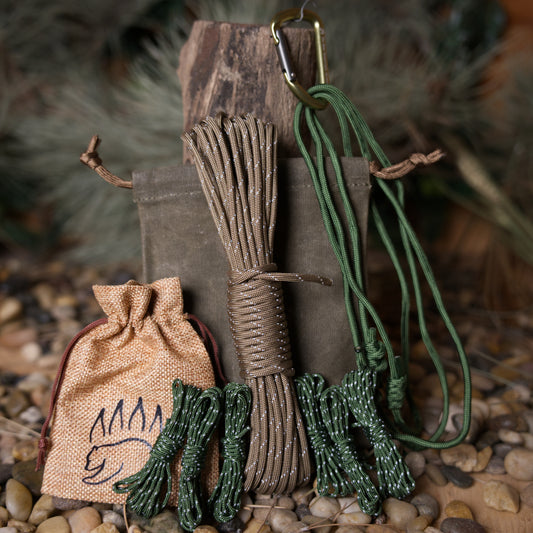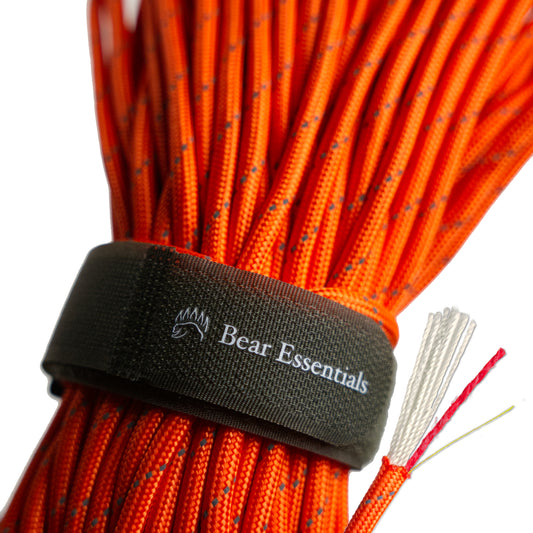How to Tie the Half Hitch
Usage
The Half Hitch is commonly used to secure a rope to an object, such as a pole or stake, in boating, camping, and utility tasks. Compared to other hitches like the Clove Hitch or Timber Hitch, it’s simpler to tie but less secure on its own, often requiring multiple hitches or a backup knot for stability. Its quick application makes it ideal for temporary ties, though it can slip under heavy or dynamic loads. It’s a favorite for mooring lines or tent guylines. The main downside is its reliance on additional knots for security.
Why Learn the Half Hitch?
Its straightforward design allows fast, temporary securing of ropes. This knot is a practical choice for outdoor enthusiasts needing a quick, versatile hitch.
Common Uses
-
Boating/Marine:
- Secures mooring lines to cleats or poles.
- Ties ropes to rings for temporary docking.
-
Utility:
- Bundles items like cords or lumber for storage.
- Fastens ropes for temporary rigging or securing loads.
-
Camping:
- Ties guylines to tent stakes for shelter setups.
- Secures tarps or gear to trees or poles.
ABOK Number
(Ashley Book of Knots)
Other Names
Category
|
Notable Features
- Quick to Tie: Forms in seconds, ideal for rapid setups.
- Versatile: Works in boating, camping, or household tasks.
- Adjustable: Easily loosened or retied for quick adjustments.
- Foundation Knot: Serves as a base for more complex hitches.
Variations
No true variations are listed in the JSON for the Half Hitch. For added security, tie multiple Half Hitches (e.g., Two Half Hitches) or add an overhand knot on the working end to prevent slipping.
Similar Knots
Clove Hitch vs. Half Hitch
- Pros: More secure for sustained loads, ties quickly to poles or posts.
- Cons: Harder to adjust and may bind under heavy tension.
Timber Hitch vs. Half Hitch
- Pros: Stronger for dragging logs or heavy objects, grips tightly.
- Cons: Less versatile, not ideal for quick, temporary ties like the Half Hitch.
History
The Half Hitch has ancient maritime roots, used by sailors to secure ropes to masts, cleats, or anchors. Referenced in The Ashley Book of Knots (#1710), it’s valued for its simplicity and role as a building block for other knots. Its widespread use in camping and utility tasks reflects its adaptability for quick, temporary securing in various outdoor and practical scenarios. Source: The Ashley Book of Knots
Security Level
The Half Hitch provides moderate security for temporary ties, holding well under light to moderate tension but prone to slipping under heavy or dynamic loads. It’s reliable when used in pairs (Two Half Hitches) or with a stopper knot, but a single hitch is insufficient for critical tasks. Adding extra hitches ensures greater reliability.
Downsides
- Limited security: Slips easily without additional hitches or knots.
- Dynamic loads: Not suitable for heavy or fluctuating tension without reinforcement.
Structure
- Pass the rope around the object (e.g., a pole, stake, or cleat).
- Bring the working end over the standing line to form a loop.
- Pass the working end under the standing line and through the loop.
- Pull the working end to tighten the hitch against the object.
- Repeat for a second Half Hitch or add a stopper knot for security.
Pro Tip: Tie at least two Half Hitches for better security, as a single hitch may slip.
FAQ
Is the Half Hitch strong enough for heavy loads?
It’s suitable for light tasks but needs multiple hitches or a stopper knot for heavier loads to prevent slipping.
What’s the best rope for the Half Hitch?
Flexible ropes like nylon or polyester work best for easy tying and secure holds.
How does the Half Hitch compare to the Clove Hitch?
The Half Hitch is simpler and quicker to tie, but the Clove Hitch is more secure for sustained loads.
Can the Half Hitch be used in climbing?
No, it’s not safe for climbing due to its tendency to slip; use knots like the Bowline instead.
Why choose the Half Hitch over the Timber Hitch?
The Half Hitch is faster and more versatile for temporary ties, while the Timber Hitch is better for dragging heavy objects.
Important Notes on Safety
Common failure points include slippage under load or a loosely tied hitch, which can cause the knot to fail. Always verify the knot is snug and test it under light load before use. Check rope for wear or slickness before tying. Tie at least two Half Hitches for secure applications. Practice tying in low-stakes settings first.







